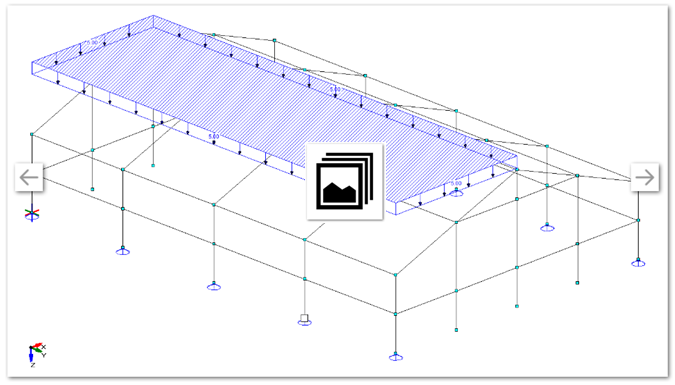MatrixFrame Area loads
MatrixFrame has a new type of load for rod construction: the area load. This type has been available for FEM floors and walls for some time. Now it can also be used with 2D / 3D frameworks and grillages. The plane is defined by selecting a series of nodes. The area load automatically detects which members are present in that plane, on which the load can be distributed. The user can influence whether or not members are bearing. An advanced algorithm then determines how the surface load must be converted to member loads. A simple and known example is a rectangular surface load, which results in an envelope-shaped distribution and results in triangular and trapezoidal loads on the members.
Automatic load distribution
By selecting a series of nodes, the plane is determined where the surface load engages. By default, all bars in that plane are considered bearing loads. Below an image of a grillage, consisting of 4 edge beams and 1 intermediate beam. The fields of the planes show the distribution of the area load to a bar load. The envelope distribution of the area load is clearly visible.
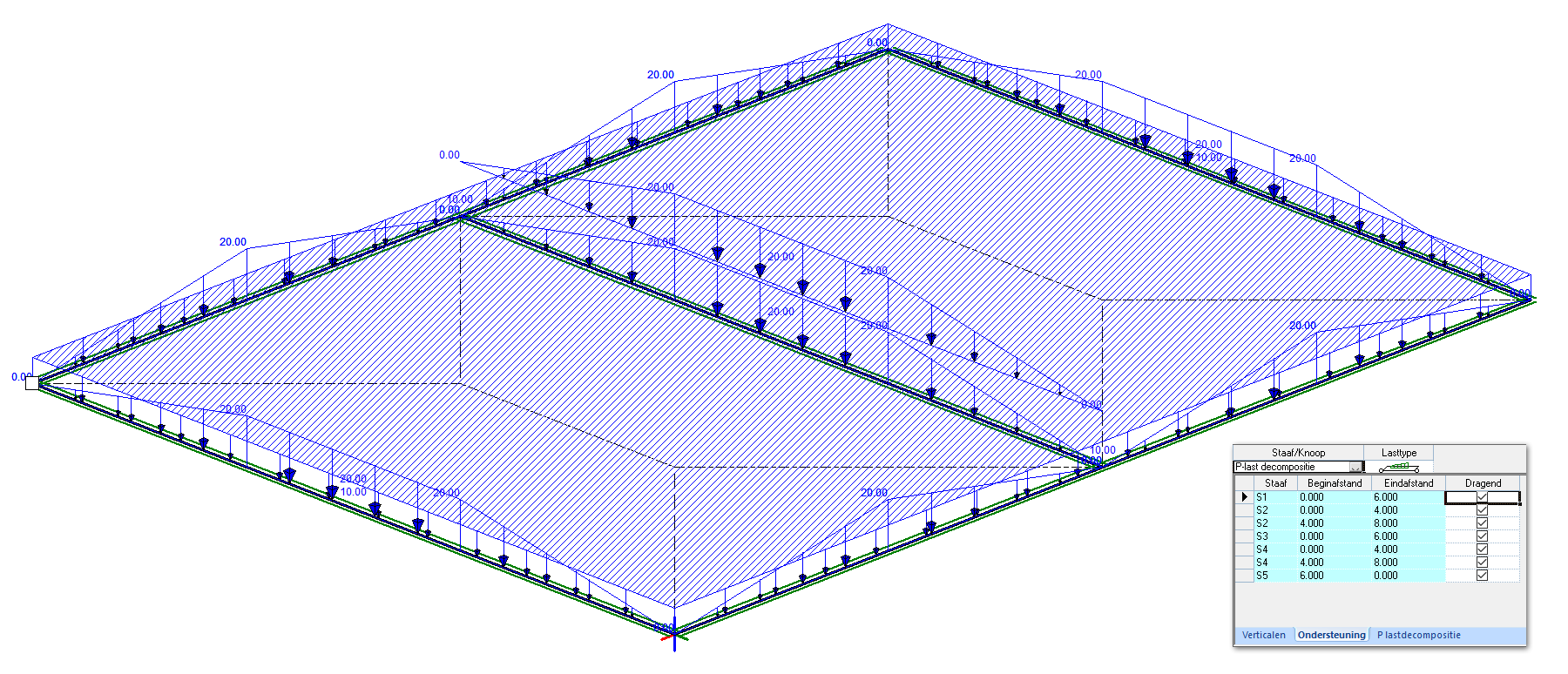
Interactive change of load distribution
If there are bars that are not allowed to contribute to load distribution, they can be switched off in the definition of the area load. This can be done via the load entry table or that can be graphically interactive using the mouse. In the image below, the front right-hand edge bar (bar 4 from 0 to 4 meters and bar 4 from 4 to 8 meters) is switched off for the load distribution. The envelope with the schedule for distribution is immediately adjusted. The same applies to the decomposition of the area loads.

Area loads for 2D, 2.5D, 3D frameworks and grillages
The new type of surface load for beams is available within MatrixFrame 2D frames, 2.5D frames, 3D frames and grillages. In the following example, the loads are applied in Z direction for the roof surface, in X direction for the side facade and in Y direction for the front facade.
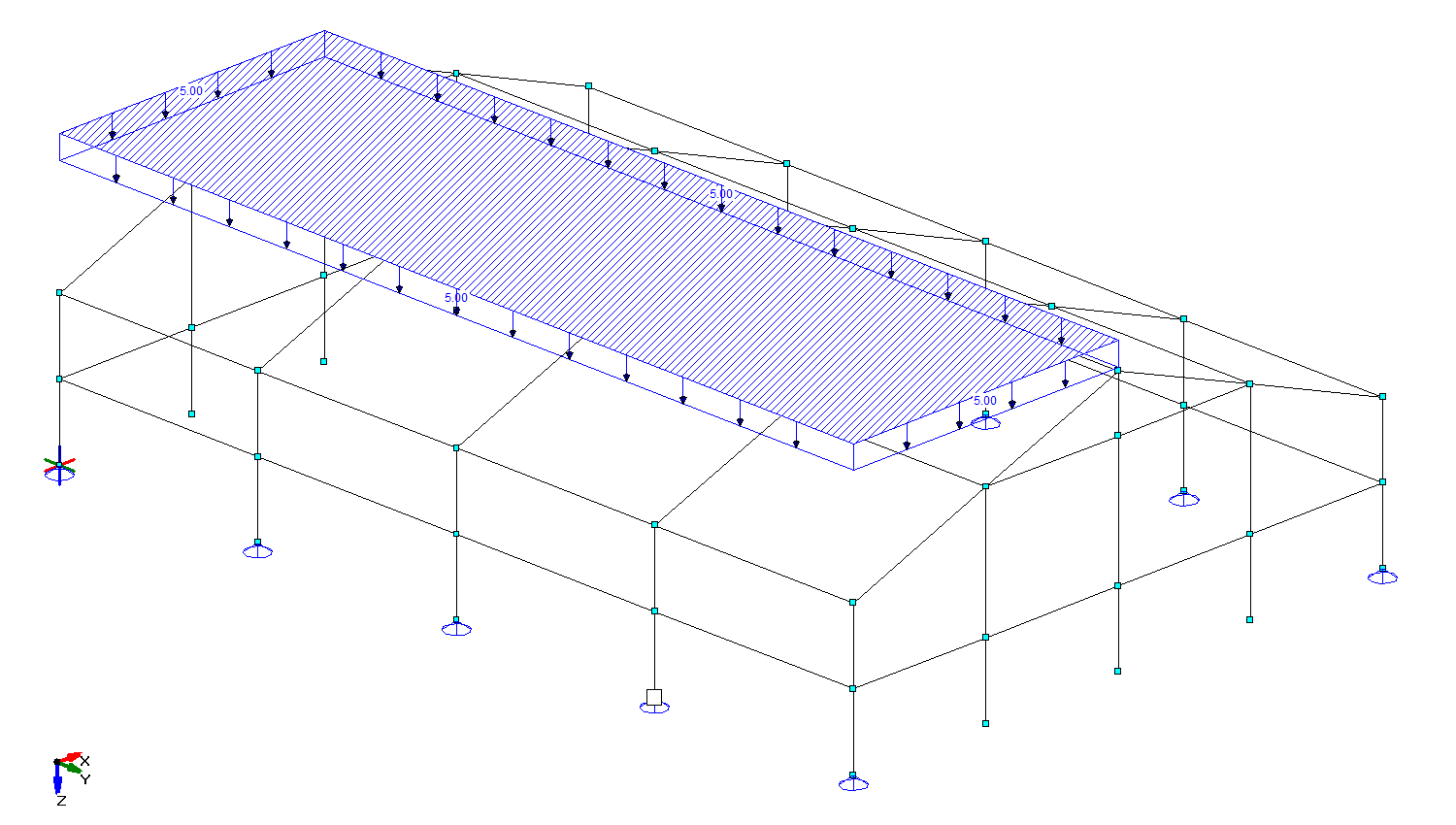

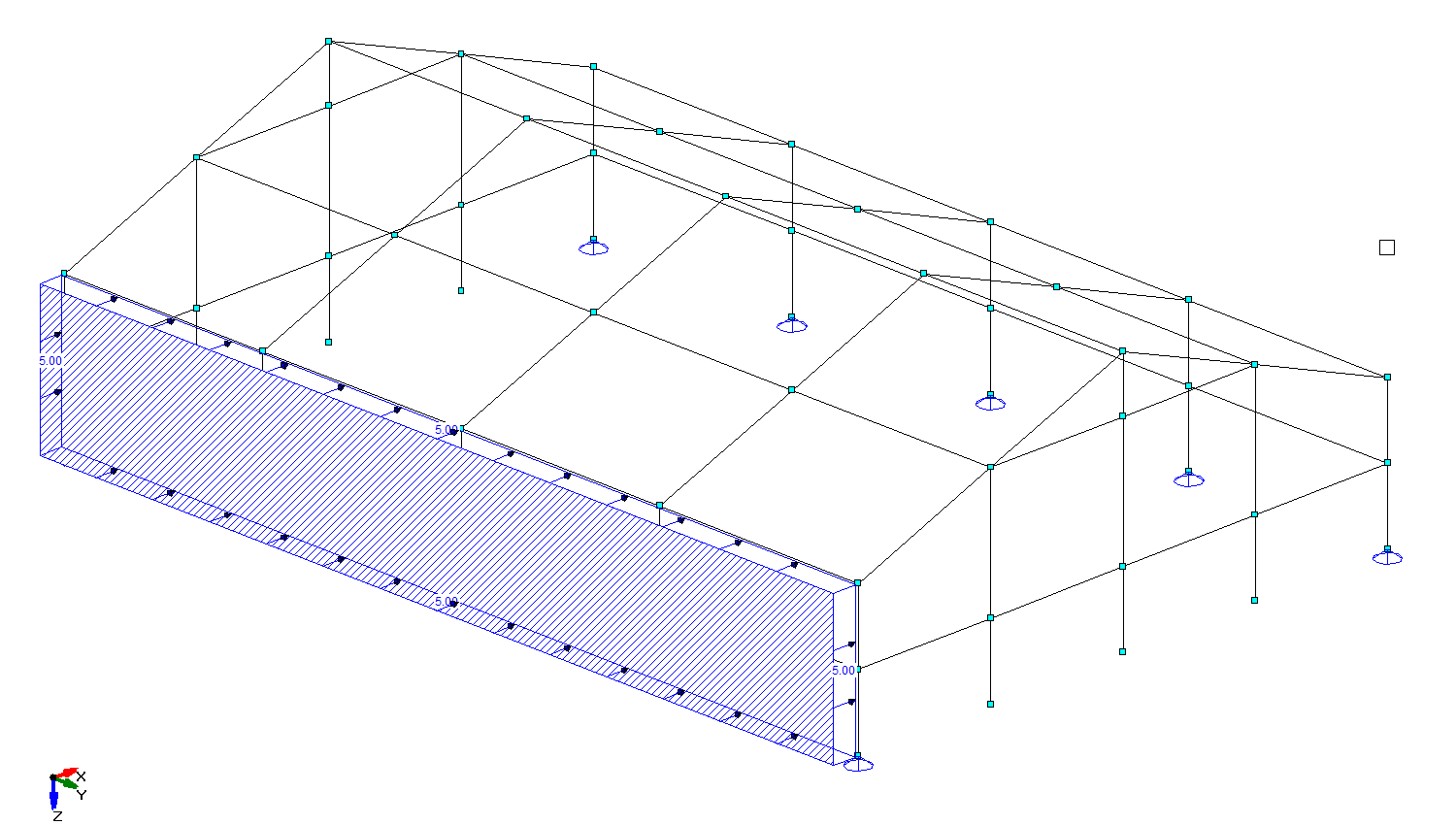
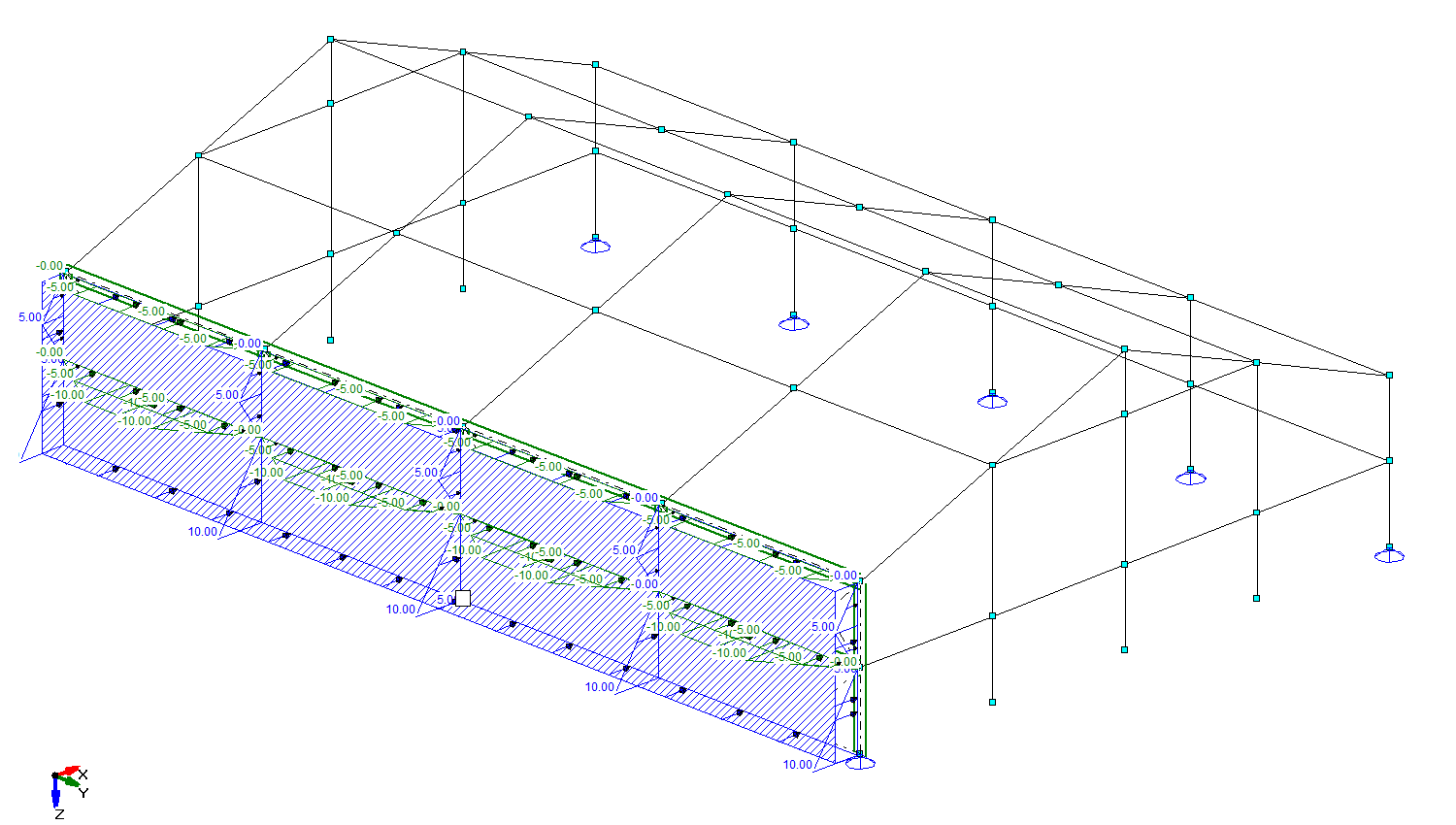
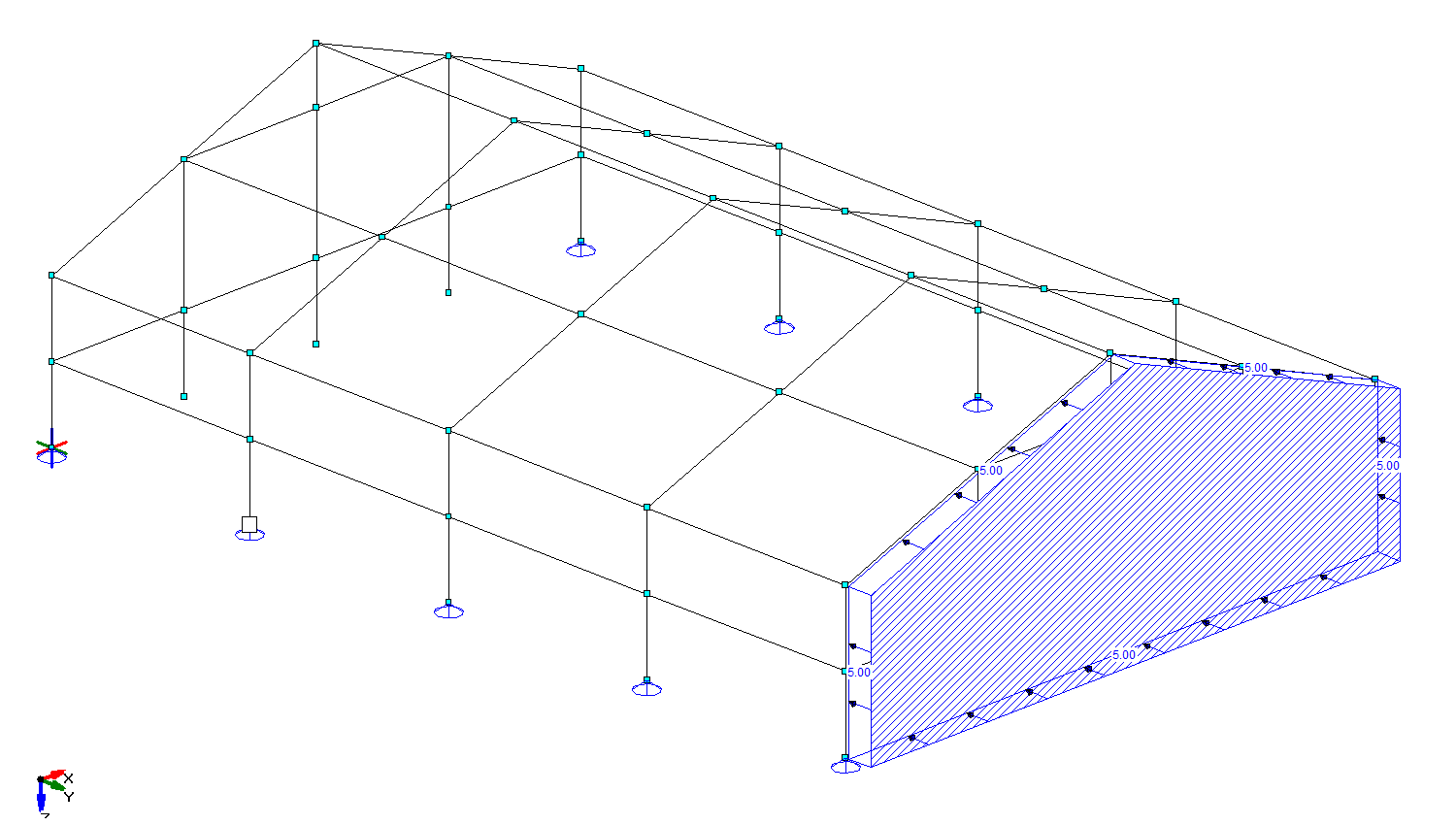
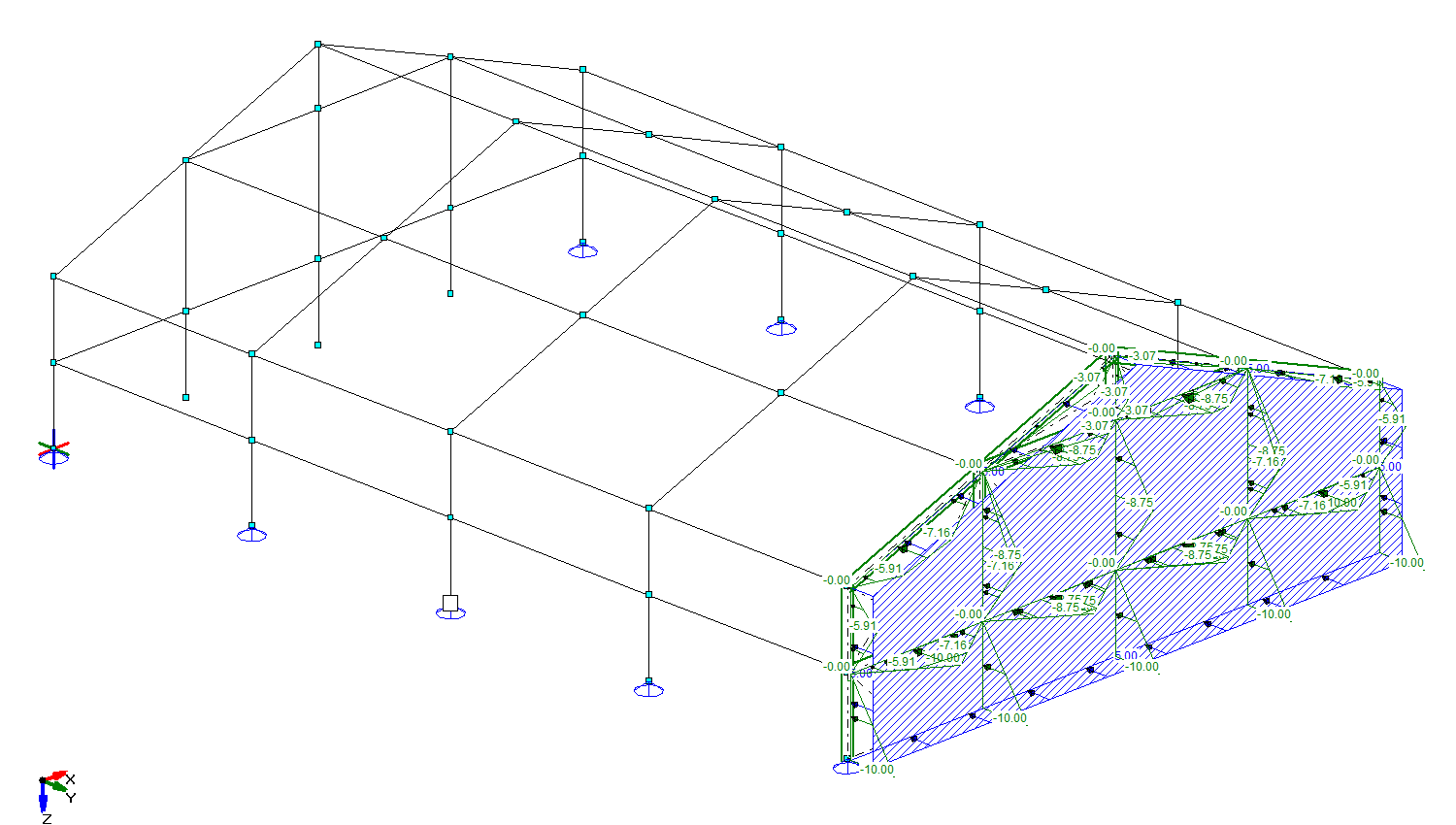
Details of the area load
The contour of the area load, the distribution of the surface load and the result of the decomposition of the area load into member loads can be managed in the table with the loads. The area load is of type P. By clicking on the list of the P-load, 3 tabs appear for the contour, the supports and the decomposition.
Contour of the area load:

Distribution of the area load:

Result of uniform, trapezoidal and concentrated loads:

From simple to complex area loads
The new surface load is applicable for simple and for complexe models. Whether a surface is straight, sloping or round, and whether there are bearing or non-bearing members under the surface load, the smart algorithm knows how to handle it. Below is an example of a beam grid with various sloping beams with 3 zones with a different surface load. The results from the decomposition to bar loads are shown per zone.

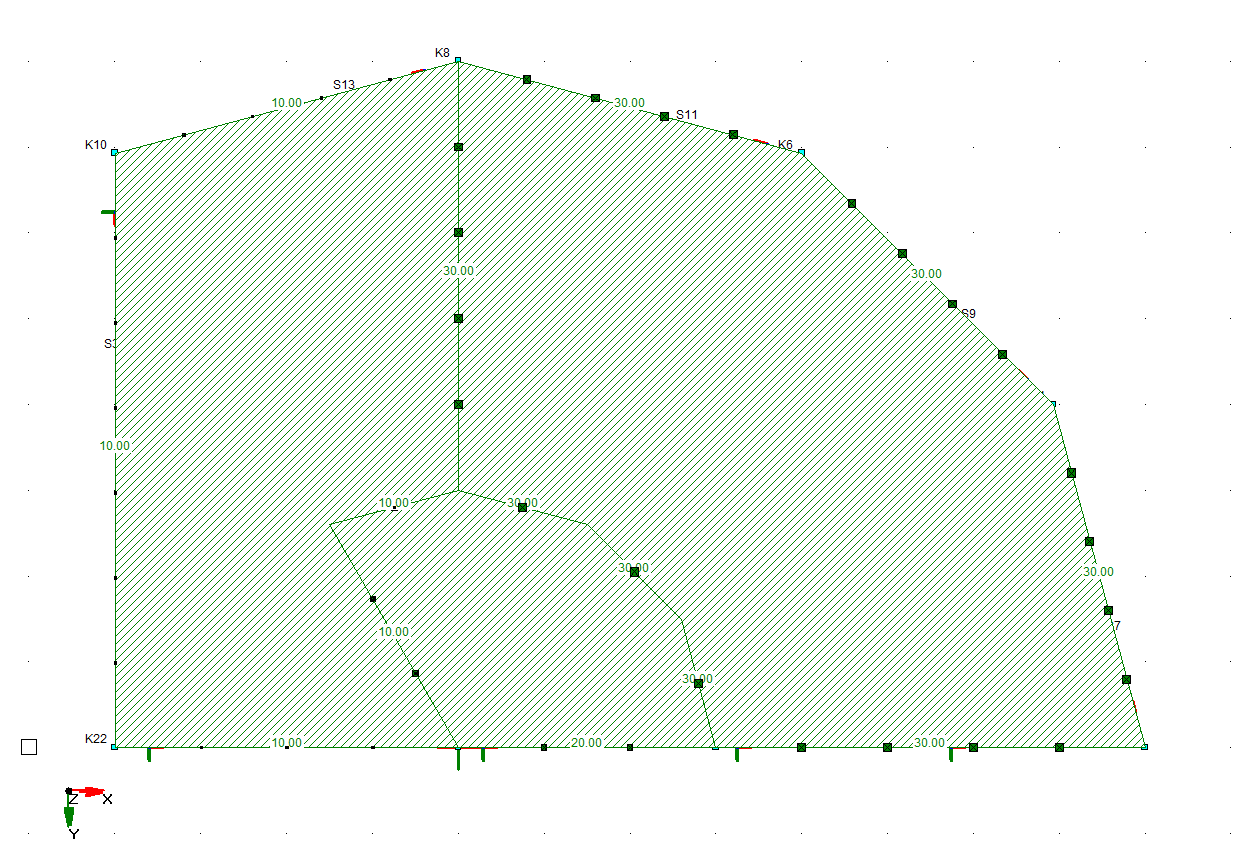
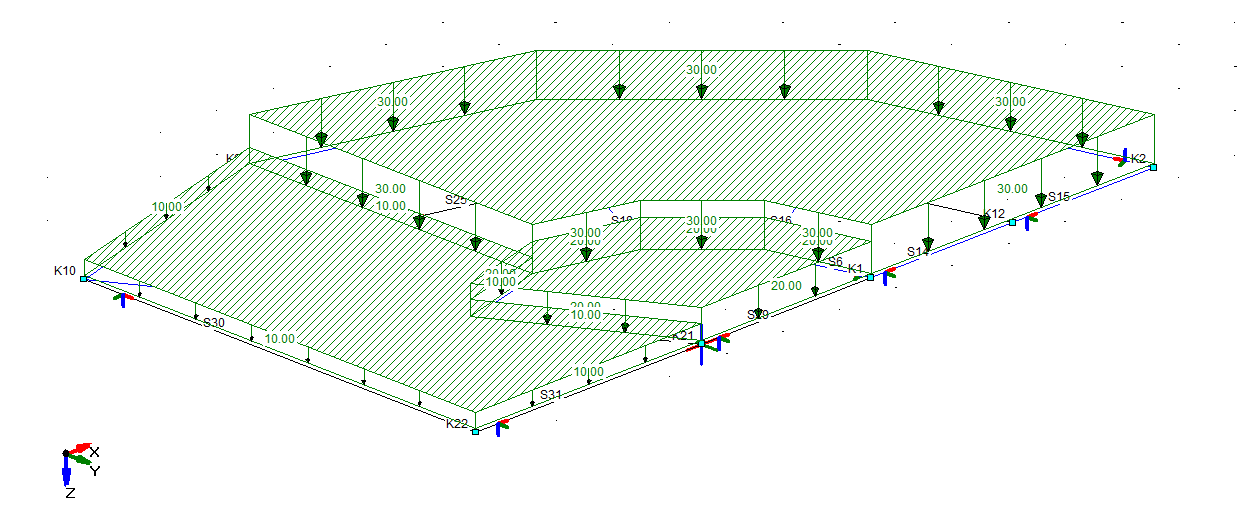
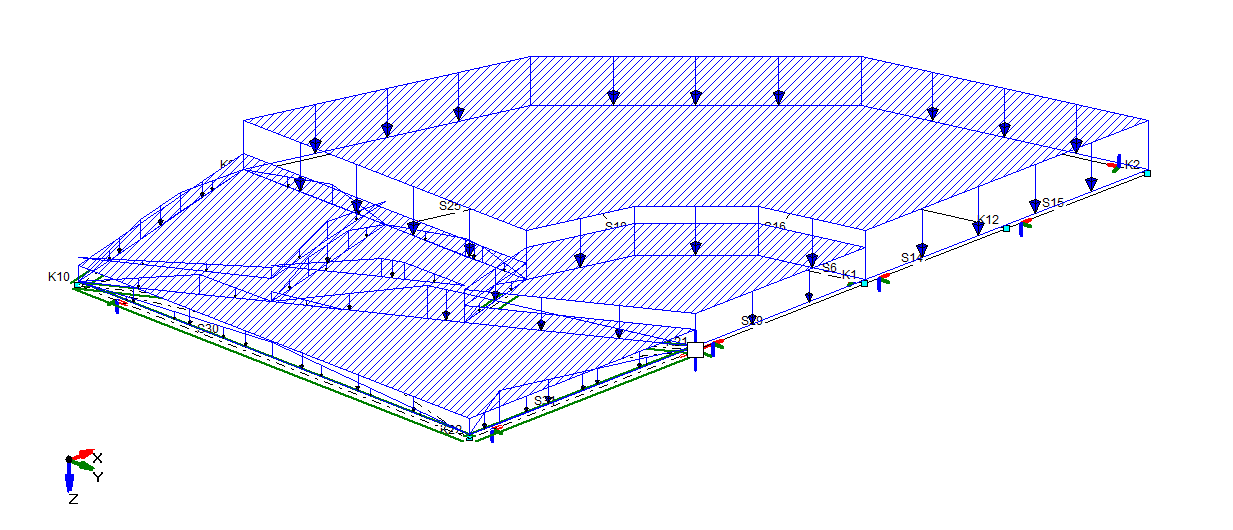
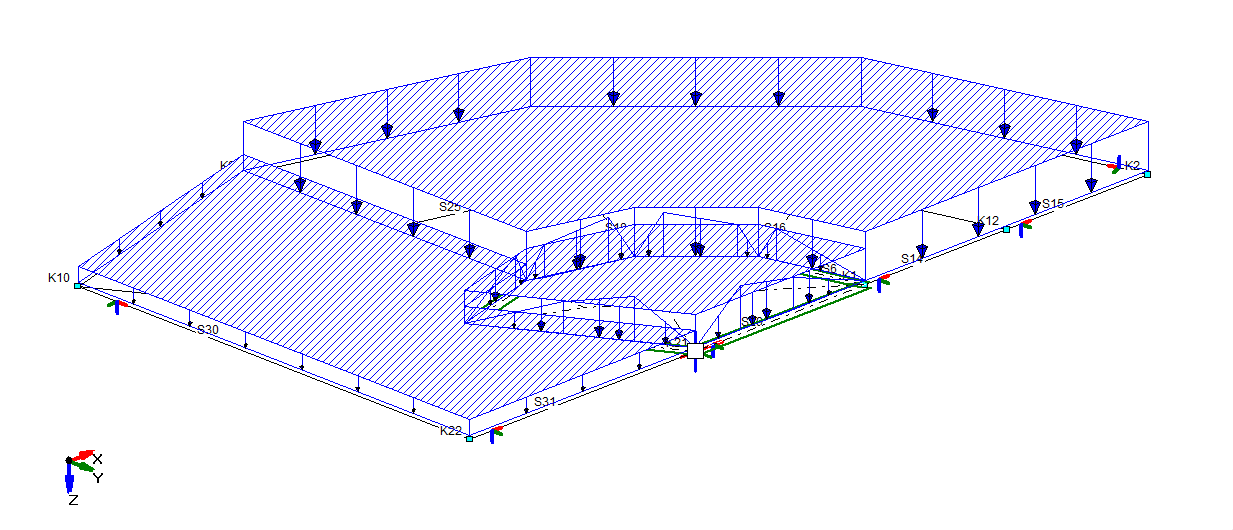
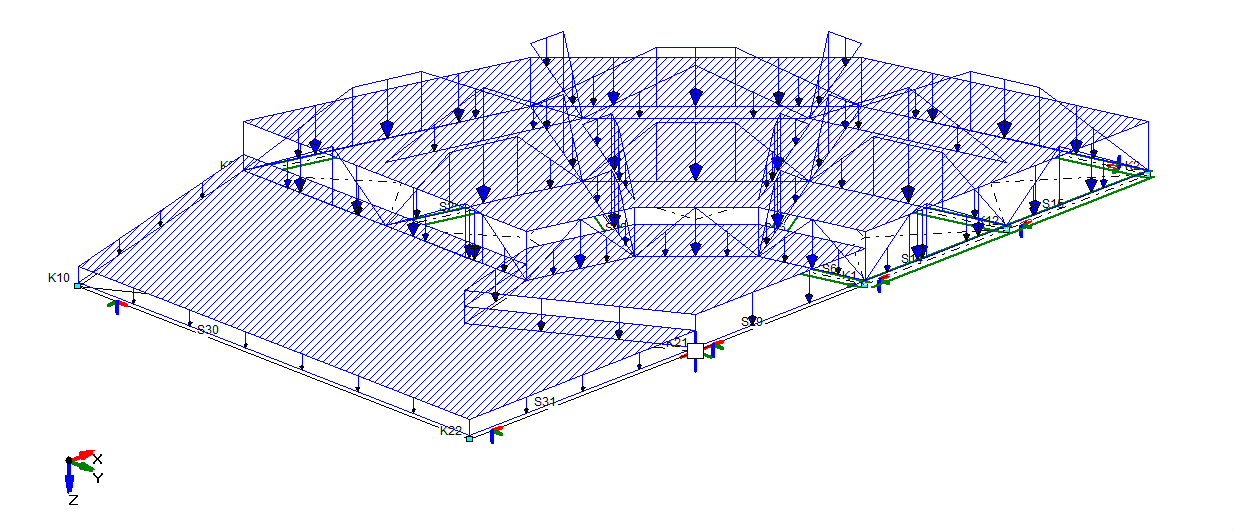
All images in detail
View all images of the new area load in detail via the zoom & pan options in the gallery below. You can zoom in and out using the mouse wheel.
